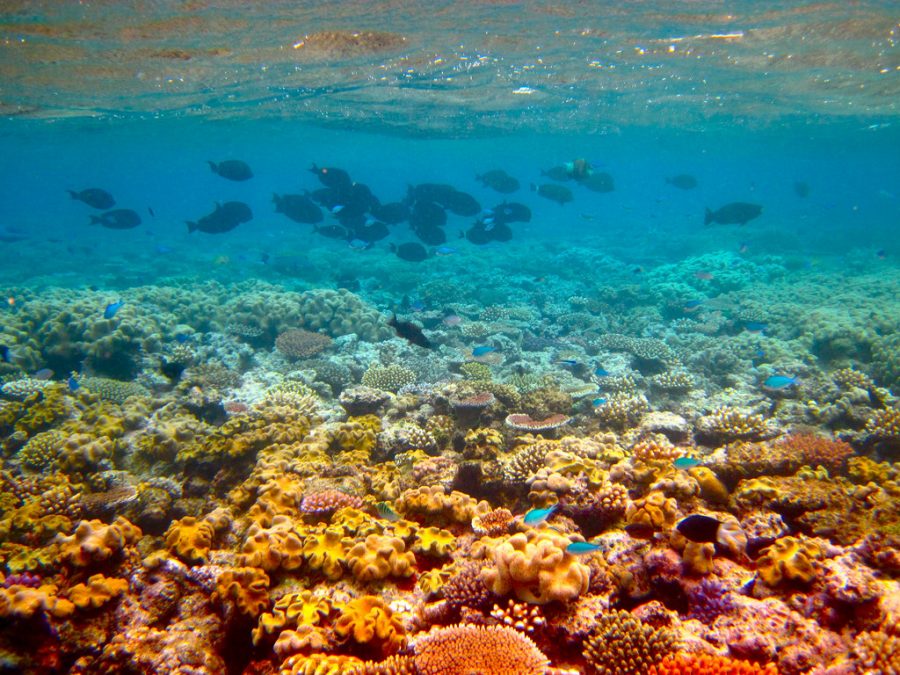The Great Barrier Reef May Be Saved By Gene Editing
May 17, 2018
One of the greatest natural wonders of the world, Australia’s Great Barrier Reef is the largest coral reef system on the planet, spanning over 340,000 square kilometers of ocean off the coast of Queensland. It’s famous for being a refuge of biodiversity and attracts around 2 million tourists to its waters every year.
However, in the past few decades, the massive reef has been suffering from several sources of decline that destroy its revered biodiversity. Runoff of pollutants commonly poison the water for the reef, while crown-of-thorns starfish continually cycle through overpopulation booms that devour coral polyps at destructive rates.
Furthermore, global climate change has resulted in regular periods of mass coral bleaching. As part of survival, the corals of the Great Barrier Reef, like other corals from tropical, great reef ecosystems, sustain a symbiotic relationship with algae-like protozoa called zooxanthellae. The zooxanthellae provide the coral with most of its nutrients through photosynthesis, while the coral provides the zooxanthellae with carbon dioxide and ammonium. The zooxanthellae is also what gives the coral its color.
However, in poor environmental conditions such as warming of the water, the coral will temporarily expel the zooxanthellae because it can no longer provide for it, causing the white ‘bleached’ appearance. While the coral can continue to survive for a short period without them, prolonged negative conditions will starve the coral to death. Algae then populate their skeletons, preventing regrowth, and decay eventually causes collapse of the reef structure.
In recent years, these mass coral bleaching events have been occurring more and more frequently, inhibiting the Great Barrier Reef’s ability to recover. In the past two years alone, the reef has experienced two mass bleaching events. Each alone, according to experts, would have been the most disastrous they’ve ever seen—and because of these back-to-back bleaching events, 29% of the reef’s ecosystems have been sabotaged.
One angle of research being done, however, could potentially create a solution. Scientists at the Great Barrier Reef are studying coral gene function using a gene-editing tool called CRISPR-Cas9 that allows them to target specific genes.
“It comes from the concept of viruses and how when they affect an organism, they dump their genetic information into it,” explained Katie Zhang, a Pitman senior who is well-informed on the subject. “So scientists use the same process to basically modify them, to have the modifications they want to have done, and then target a certain gene. Cas9 is the protein that targets the exact area, so that it’s not dumping information wherever and cutting wherever. And so it cuts it and targets that area and then Cas9 repairs it with the new genetic information.”
Recently, they conducted an experiment on coral zygotes in which they disabled three specific genes: red fluorescent protein, green fluorescent protein and fibroblast growth factor 1a, a gene that helps regulate how the new coral settles and grows in a reef. While the last caused successful genetic mutation, the researchers discovered that targeting a single gene for the fluorescent proteins alone was not enough; apparently, the corals have more than one copy.
The end hope is not to create the perfect species of coral, as the idea may be impossible and creates too many ethical questions.
“Right now, what we really want to do is figure out the basic mechanisms of how coral works and use that to inform conservation efforts in the future,” said Dr. Phillip Cleves, a researcher from Stanford University and lead author on the study. “Maybe there are natural gene variants in coral that bolster their ability to survive in warmer waters; we’d want to know that.”
Alongside Australia’s recent decision to invest $500 million AUD ($377 million USD) into protecting the Great Barrier Reef, these studies on coral using CRISPR-Cas9 provide a lot of potential for the future of the unique reef’s conservation.
